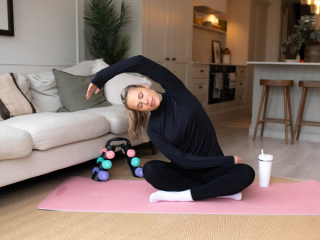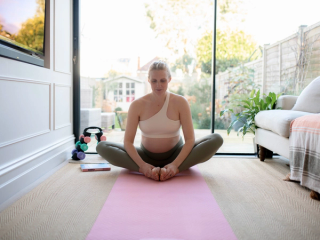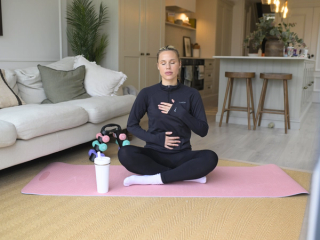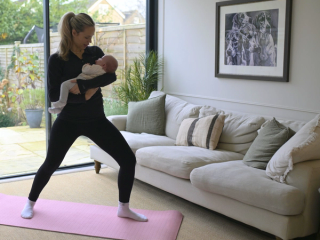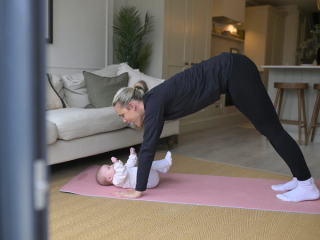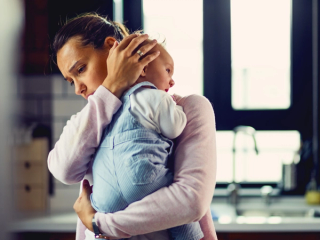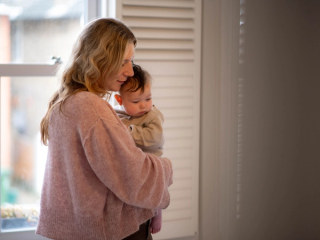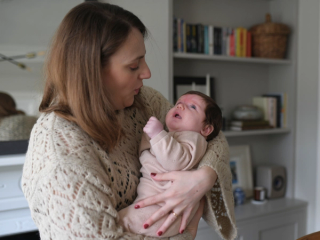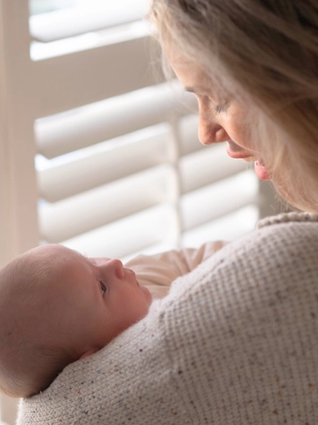
- Home
- Advice Hub
- Newborn
- Postnatal Care
- Your Body After A Vaginal Delivery
What to expect immediately after a vaginal birth
Learn about the first moments after a vaginal birth, from physical changes and what to expect within the first 6 weeks of giving birth.
Pregnancy is a long journey of growth and understanding about the incredible capabilities of your body, we often focus on what our body and baby need to thrive during this time and put less focus on what we might need after labour.
Every birth is unique, however a vaginal birth is the most common form of delivery. There are many factors which will impact the recovery journey. You will likely have shared many stories and experiences of family and friends, whilst hearing others' experiences can be positive and helpful it will also put you at ease to educate yourself on what you may experience and what to expect.
What to expect immediately after birth….
Birth injuries
Our Pelvic Health Physiotherapist advises "It is very common to experience some tearing or require an episiotomy during a vaginal birth. The severity can vary and stitches may be required in some cases, but this is a normal part of labour.
On your hospital discharge form it will detail any birth injuries and it’s important for you to know what you are healing from. The most common injury is a tear to your perineum, which is the area between your vaginal opening and your anus. You can also get tears elsewhere and again this should be communicated to you. For a perineal tear you will be told a grade, which is how severe the tear was. Here’s what they mean:
- Grade 1: superficial graze of the skin, may or may not require a couple of stitches.
- Grade 2: a tear of the skin and muscles underneath.
- Grade 3: a tear all the way back through to the anal sphincters, this grade is further broken down into a, b, and c and details the extent of injury to the sphincter muscles.
- Grade 4: a tear all the way from the vaginal opening through the anal sphincters and involving the bowel lining.
- Episiotomy: a cut made by a medical professional to widen the vaginal opening making more space for the baby to come through. Usually, this is done to prevent severe perineal tearing, or to protect the life of you or your baby. It should have been communicated to you why it was necessary in your case."
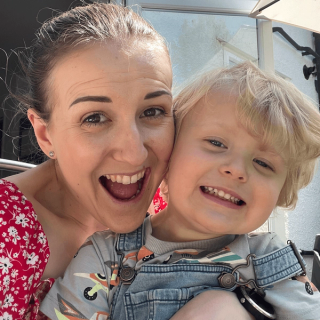
Bruised and swollen vulva
Even if you have no tears, it is likely post vaginal birth the vulva may appear swollen, bruised and tender, your body has been through a lot! This is common and usually subsides within one to two weeks.
After birth contractions
It is also normal to feel ‘after pains’ which can feel like small contractions, this is your uterus working to go back to its original size. These contractions may feel stronger if you are breastfeeding your baby, as during feeding your release oxytocin. Over time you will notice these become less uncomfortable.
What to expect in the first 6 weeks
The postpartum period is also known as the fourth trimester. This is a significant time of physical and emotional changes and adjustment for both you and your baby.
You may experience all or only some of the following-
Postpartum bleeding (Lochia)
Whether you have had a vaginal birth or a C Section, postpartum bleeding, known as lochia, is a normal experience after giving birth. The bleeding tends to start as a deep red but changes over time to more of a brown discharge and eventually will stop.
"There are three stages to the process:
- Stage 1: The first stage will last around four days; it will be dark red blood and even small clots are normal. Your uterus continues contracting to help the process and so expect intense, period-like cramps. These cramps can be more intense when breastfeeding, and with each subsequent child you deliver.
- Stage 2: From day 4 to 10 it will change from fresh to a pinkish brown discharge and the clots should be stopping.
- Stage 3: Finally, a yellow/white discharge, occasionally some light bleeding but no clots. The full clear-out is usually complete by 6 weeks."
If you notice an increase in bleeding, clots or signs of infection, always seek medical advice. You should not use tampons until after your 6 week check. Having lots of very absorbent pads to hand will be necessary and changing them often will keep sensitive areas clean.
Perineal pain
Perineal pain can occur after a vaginal birth due to bruising, tearing and stretching. This vaginal soreness may last a few weeks. "Your baby stretched the vaginal walls and pelvic floor on their exit and so this can lead to prolapse type symptoms. This does not mean you have a prolapse. A prolapse is when a pelvic organ such as the bladder is pushing down into the stretched vaginal wall long term. The key difference is that after birth this is an acute injury that the body is working to heal." - Aby
Nice warm baths and very gentle body movement can help promote healing. You can also take over the counter pain relief to help.
Sore Breasts
After a few days your milk will start to come in and you will notice that your breasts feel full and in some cases this can be painful. Depending on whether you choose to breastfeed or bottle-feed will also have an impact on your milk supply and how this makes your breasts feel. You can soothe sore breasts by wearing bras which fit well, using warm compresses and if you are breastfeeding your baby, allowing your baby to feed can also provide relief.
Haemorrhoids
Haemorrhoids are swollen veins that can be found inside or outside your rectum or anus (back passage). They are incredibly common after giving birth. It is important to drink plenty of water and eat a diet which has a good amount of fibre. This keeps the stool nice and soft and helps it to pass through the body with ease and without causing further trauma or worsening of your haemorrhoids. You can also purchase creams to soothe the pain and discomfort caused by haemorrhoids however it is always important to consult your healthcare provider first.
Urinary incontinence
It is common to leak urine after having a baby, you may experience this when you laugh or move suddenly. However, if it has not resolved by six weeks postpartum it is important that you speak with your health care provider about it. There are specialist pelvic floor physiotherapists who can help you to restore your pelvic floor back to full health.
Do not be embarrassed to speak to a medical professional about this, its more common than you think and is very easy to remedy.
Tips to help ease pain and discomfort
Recovering from birth is a journey and it is incredibly important to give yourself time emotionally and physically to heal. Sleep deprivation and hormonal changes can leave us with mood swings and feeling exhausted. There are lots of ways you can manage your postnatal care, and it is a lovely time to invest in looking after yourself.
Rest
The old cliche ‘sleep when the baby sleeps’ can be frustrating, however it is very practical advice. Taking a rest when and where you can is crucial and very deserved. Ask for help. Be specific about what you need and remember resting can be anywhere between sitting down with a cup of tea to taking a nap with your little one.
Pain relief
Speak to your health care provider about managing pain through over-the-counter medicines such as paracetamol. Ice packs or heat packs for aches and pains, warm baths can always offer relief and relaxation.
Keep wounds clean
If you do have stitches or an episiotomy, you can bathe them each day to prevent risk of infection. It is also important to change your sanitary towels regularly. If the amount of discomfort or pain you are experiencing is concerning you, it's always important to speak with your health care provider about it.
Eat fibre rich foods
Going for a poo after giving birth can feel daunting, but it is important not to become constipated. Prevent constipation by drinking plenty of fluids and eating fibre-rich foods. If necessary, a stool softener can help make bowel movements more comfortable. New mums often say that holding a pad against the sensitive parts of stitches while they are having a poo helps to stop the area from feeling strained.
Stay hydrated
Tears or episiotomies can leave us with a painful stinging sensation when we pass urine. Keeping hydrated so your urine is a nice, pale yellow will help reduce this stinging feeling. You can also fill a clean bottle with warm water and pour it on your vaginal area as you pass urine to help dilute before it hits any sore bits. Gently pat dry with toilet paper.
Postpartum appointments
You should expect a postpartum check-up around six to eight weeks, during which you will have the opportunity to talk to your health care provider about your physical and mental recovery. Don’t hesitate to reach out earlier if you experience symptoms of concern.
When can you get pregnant after having a baby?
It is important to give yourself plenty of time to recover emotionally and physically before getting pregnant again, ensuring you are at your best health overall before another pregnancy will improve your chances of everything going smoothly.
When to seek medical help
Contact your healthcare professional if you experience any of the following symptoms:
- Fever (temperature greater than 38 degrees celsius) or flu-like symptoms
- Heavy bleeding that soaks a pad within an hour
- Passing clots
- Feeling dizzy or weak
- Severe, persistent abdominal pain
- Foul-smelling discharge
- Red, swollen or painful stitches
- A wound which has redness around it, pus coming from it or seems to be opening.
- Headache, blurred vision or vomiting
- Pain on passing urine
- Problems controlling your urine or poo for more than 6 weeks after birth.
Final thoughts
It is important to be kind to yourself, recovery takes time and patience. Reach out to your network of support and accept help when it’s offered. Remember, recovery is not just physical but also emotional, so don’t hesitate to seek professional support if needed. As the saying goes, “It takes a village”—and you’re never alone on this journey.
Vaginal birth FAQs
Lochia is the vaginal discharge you experience after giving birth. It is made up of a mix of blood, mucus and uterine tissue. There are three stages to it. The first stage is dark or bright red blood that lasts for three or four days. The second stage is more like a pinkish brown discharge with only a little bit of blood, this stage lasts anywhere from four to twelve days. The third and last stage of lochia is a yellowish white discharge with little or no blood and can last from two to six weeks.
Bleeding typically lasts between four to six weeks, gradually decreasing over time. Use very absorbent pads and change these regularly to reduce the risk of infection.
The cervix can take up to 6 weeks to fully return to its pre-pregnancy state.
Most mums say that they feel recovered by six to eight weeks.However, recovery after birth can take much longer than this. It's very much unique to each person, the experience they have had and the level of support they have around them.
Listen to your body and relax whenever possible. Resting can look like reading a book, having a bath, chatting with a friend or a loved one, taking a nap or going for a walk.
Important Notice
We recognise that breastfeeding is best, providing many benefits to both mothers and infants. We also recognise that every parenting journey is unique, and we are here to support you through this journey, however you choose to feed your baby.
If you choose to breastfeed it is important that you eat a healthy well-balanced diet in preparation for and during breastfeeding. Before deciding to combination or formula feed your baby, note that reducing or stopping breastfeeding can be difficult to reverse. Babies feed on demand, so replacing breastfeeding with infant formula milk may reduce your supply. Formula feeding has both social and financial implications. Talk to your midwife or health visitor for guidance and support.
If you choose to use formula milk, make sure you choose the right milk for your baby’s age and prepare and store it according to the instructions on the packaging. Not doing so may make your baby ill. Infant formula is a nutritionally complete breastmilk substitute that can be used from birth. From 6 months you can choose to use follow on milk as part of a mixed diet and from 12 months you have the option to move onto growing up milk alongside a balanced diet.



